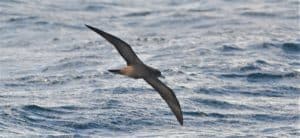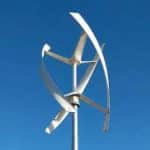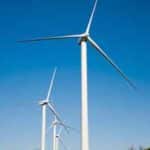One of the most important global meetings on wildlife trade has just wrapped up in Uzbekistan. It’s capital city Samarkand was where governments convened for the 20th Conference of the Parties (CoP20) to the Convention on International Trade in Endangered Species of Wild Fauna and Flora (CITES) to decide how international trade should be managed for some of the world’s most threatened...
Last week, HSI provided a submission to the Federal Environment Department in support of threatened species protection for a diminutive and beautiful seabird, Ardenna grisea, the sooty shearwater.

Sooty Shearwater (Ardenna grisea) – LChlebeck
While this is not really anything new for HSI (we’ve successfully nominated over 75 species including many seabirds) this nomination felt different.
Bycatch in commercial long-line fisheries and predation from terrestrial introduced species have long been by far and away the most significant threats to seabirds across the world’s oceans1 and conservation actions have focused on these pervasive threats.2
Governments around the world have committed significant effort and resources to predator eradication programs to facilitate recovery of seabird colonies on remote and offshore islands since the 1970s. As of 2004, feral cats had been removed from 48 islands globally, with over 1200 programs implemented globally since, and many similar focusing on rats and mice3. These efforts have significantly reduced the impact of introduced predation on global seabird populations.
While the threat of predation is ended one island at a time, and seabird mortality is painfully negotiated at global fisheries management organisations (which HSI is still working hard on!), there are unfortunately newly emerging threats to seabirds – like the sooty shearwater, whose impacts are unclear and magnitude uncertain.
The cause of these emerging threats can be traced back to one thing – the climate crisis.
It is climate change that looms largest in the case for a threatened species listing for the sooty shearwater.
The most likely way a warming climate will impact seabirds is changes in the distribution and availability of prey. Every animal and plant on the planet will be affected by some degree to changes in resource availability due to climate change, but the life history, feeding ecology, and migratory nature of seabirds means this effect is amplified. Because much of their life is dictated by weather patterns and ocean currents, seabirds will be hard-pressed to cope with these changes. Shifting large-scale oceanographic cycles and an increase in sea surface temperature could decrease the productivity of ocean ecosystems, reducing the amount of food available for seabirds. In fact, the evidence of climate-driven impacts on populations of seabirds, and specifically the sooty shearwater, are already apparent, with a 90% decline in the species’ abundance off the Californian coast4,5.
Climate changes are also impacting breeding performance6. Changes in the timing and intensity of rainfall is of particular concern for burrow-nesting seabirds like shearwaters, with burrow flooding being a significant source of chick mortality, and one that could increase.
Climate-driven disruptions of delicately balanced atmospheric and oceanic systems are near impossible to predict, and migratory seabirds such as the sooty shearwater depend intrinsically on the regular functioning of these systems that dictate the timing and location of feeding, migration, and breeding.
A consequence of the climate crisis currently faced by mankind is the urgent need to transition our power infrastructure away from carbon-based energy sources. For Australia, like many parts of the world, the construction of offshore windfarms is a significant component of this transition. It is sadly ironic that this climate friendly source of power could pose its own difficulty for some seabirds unless designed well.
Windfarms have the potential to obstruct important migratory flyways and force birds to alter flight patterns when foraging. Inevitably, bird strikes are common occurrences at offshore windfarms7. Due to this new threat, it is imperative that technologies are used and sites are selected that minimise interactions with birds.
The Australian Government has acknowledged this threat but we are worried they might take an approach to monitor potential impacts and then work to mitigate them after windfarms have been installed. HSI has recommended they tackle the risks up front and design wind farms to avoid bird strike. As such, the selection of offshore farm sites must consider migratory flyways and foraging territory, and these considerations must influence site selection. Once lowest-risk sites are selected, engineering specifications that result in the smallest impact on seabirds must be developed and implemented. The most obvious example of this is using vertical-axis wind turbines (VAWT) instead of horizontal-axis wind turbines (HAWT), ensuring blades are a suitable distance from the water to avoid the flight paths of species at risk.


Vertical-axis versus horizontal-axis wind turbines
Preliminary research suggests that VAWTs have a significantly smaller likelihood of birdstrikes, and while more research is needed in the space, VAWTs should be considered preferable in terms of reducing the risk to seabirds.
Seabird conservation is thus entering a new phase as climate-driven impacts manifest. While the international community still struggles to reduce the deaths of seabirds to predation and in commercial fisheries, the unpredictable threats climate change will bring could turn things catastrophic. Combatting climate change and decarbonising our power sources is imperative. It is also critical to continue to mitigate predation and fishing impacts, to build as much resilience as possible into seabird populations to weather the uncertain threats of a changing climate. A threatened species listing for the sooty shearwater can only help.
References
1 Croxall JP, Butchart SHM, Lascelles B, Stattersfield AJ, Sullivan B, Symes A, et al. Seabird conservation status, threats and priority actions: a global assessment. Bird Conservation International. 2012;22:1–34
2 Pardo D, Forcada J, Wood AG, Tuck GN, Ireland L, Pradel R, Croxall JP, Phillips RA. Additive effects of climate and fisheries drive ongoing declines in multiple albatross species. PNAS. 2017; 114:50
3 DIISE. (2015). The Database of Island Invasive Species Eradications, developed by Island Conservation, Coastal Conservation Action Laboratory UCSC, IUCN SSC Invasive Species Specialist Group, University of Auckland and Landcare Research New Zealand
4 Veit RR, Pyle P, McGowan JA (1996) Ocean warming and long-term change in pelagic bird abundance within the California current system. Marine Ecology Progress Series 139, 11-18.
5 Veit R, McGowan JA, Ainley DG, Wahl TR & Pyle P (1997) Apex marine predator declines ninety percent in association with changing oceanic climate. Global Change Biology 3, 1, 23-28.
6 Brothers N & Bone C (2008) The response of burrow nesting petrels and other vulnerable bird species to vertebrate pest management and climate change on sub Antarctic Macquarie Island. Papers and Proceedings of the Royal Society of Tasmania 142, 123-148
7 Reid K, Baker GB & Woehler E (2022) Impacts on birds from Offshore Wind Farms in Australia. Department of Climate Change, Energy, the Environment and Water, Canberra. CC BY 4.0


